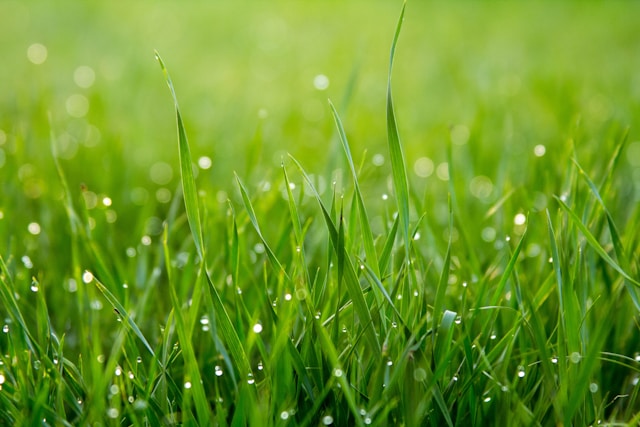Lawn aeration is a well-known practice among homeowners who want to keep their grass looking lush and vibrant. But beyond simply being a routine task, aeration is rooted in scientific principles that make it highly effective in promoting a healthy lawn. In this post, we’ll dive into the science behind lawn aeration and why it’s such a critical component of lawn care.
What is Lawn Aeration?
Lawn aeration involves creating small holes in the soil to alleviate compaction and improve the movement of air, water, and nutrients to the grass roots. There are two primary methods:
- Core Aeration: This method removes small plugs or “cores” of soil from the lawn.
- Liquid Aeration: Involves applying a solution that creates microscopic holes in the soil, allowing air and water to penetrate.
Both methods serve the same fundamental purpose: to enhance the soil environment and support healthier grass growth.
The Problem of Soil Compaction
Soil compaction occurs when soil particles are pressed together, reducing pore space and making it difficult for air, water, and nutrients to move through the soil. This often results from foot traffic, heavy equipment, and even natural settling processes. When soil is compacted, the grass roots are deprived of essential resources, leading to poor root development, weakened grass, and an increased susceptibility to diseases and drought.
The Science of Aeration
Improved Air Exchange: Grass roots need oxygen to thrive. Aeration helps by creating channels that allow more oxygen to reach the root zone. Increased oxygen levels stimulate root respiration, which is essential for root growth and overall plant health.
Enhanced Water and Nutrient Uptake: Compacted soil often leads to water runoff, preventing moisture from reaching the roots. Aeration opens up the soil, allowing water to penetrate deeper and reach the roots where it’s needed most. The same principle applies to nutrients; when the soil is properly aerated, fertilizers and natural nutrients in the soil can more easily reach the grass roots.
Root Development: When the soil is compacted, roots tend to stay shallow, making the grass more vulnerable to stress. By relieving soil compaction through aeration, roots are encouraged to grow deeper into the soil. Deeper roots lead to stronger, more resilient grass that can better withstand environmental stresses like drought and heavy use.
Microbial Activity and Soil Health
Healthy soil is teeming with beneficial microbes that play a crucial role in nutrient cycling and organic matter decomposition. Aeration enhances microbial activity by improving the soil’s oxygen levels and structure. As microbial activity increases, so does the breakdown of organic matter, which enriches the soil and provides a steady supply of nutrients to the grass.
Long-term Benefits of Regular Aeration
- Stronger, Healthier Grass: Regular aeration leads to grass that is better equipped to handle stress from drought, disease, and foot traffic. The improved root systems and nutrient availability result in a lawn that looks lush and vibrant year-round.
- Improved Soil Structure: Over time, regular aeration helps maintain and even improve soil structure by preventing future compaction. This creates a more favorable environment for grass growth and reduces the need for excessive watering and fertilization.
- Enhanced Lawn Appearance: The most noticeable benefit of aeration is a thicker, greener lawn. By promoting healthy root growth and improving nutrient uptake, aeration contributes to a more even, aesthetically pleasing lawn that’s the envy of the neighborhood.
The science behind lawn aeration is clear: it’s a highly effective method for improving soil health and promoting strong, healthy grass.
By understanding and implementing regular aeration, you can ensure your lawn remains vibrant and resilient. Incorporating aeration into your lawn care routine is not just about maintaining appearances; it’s about fostering a healthy ecosystem right in your backyard.
Ready to see the benefits of aeration for yourself?
Contact GreenStripe today to schedule a professional aeration service and take the first step towards a healthier, more beautiful lawn.



